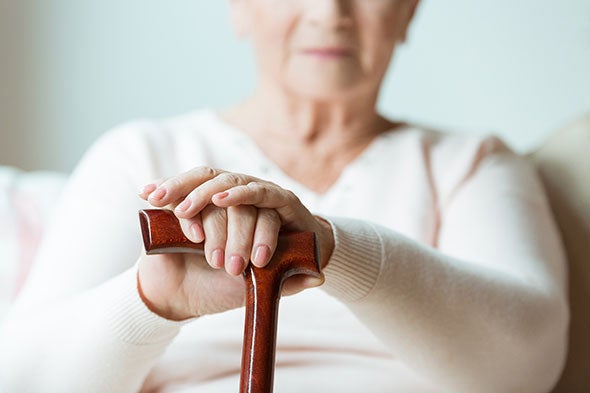Osteoporosis - Risk Factors Prevention and Treatment
October 18, 2018Osteoporosis is a condition that makes your bones weak and brittle, which causes them to break easily. In most cases, broken bones occur after a fall or other trauma, but in severe cases, broken bones may occur with just minor bumps, coughing or sneezing.
What causes osteoporosis?
Osteoporosis occurs anytime there is a change in how your body maintains your bones; when your body loses too much bone, stops making enough bone, or both.
In women, hormones are important in maintaining bone health, particularly estrogen, which tends to decrease when women hit menopause.
This is a major reason that women are more likely to develop osteoporosis as they age.
Risk Factors for Osteoporosis
Osteoporosis can occur in both men and women. However, it is more common in women.
Approximately 80% of those living with osteoporosis are women.
In most cases, these individuals are asymptomatic, which is why proper screening is so important. In some women, medications, family history, ethnicity, diet and exercise habits may also put them at risk. Women who have a strong family history of osteoporosis (multiple family members with the condition), are at higher risk.

How can you prevent osteoporosis?
Some risk factors, like your family history or age, can’t be changed, but there are some things that you can do to reduce the risk of developing osteoporosis.
#1 – Develop healthy habits when you are young.
Most women will have their highest bone density or strongest bones around age 18, although they may continue to have an increase up to age 30.
Between age 30 and menopause, this amount typically stays stable in healthy women, and then starts to decrease after menopause. For this reason, it is important to make changes when you are young, to prevent bone loss later in life. However, it is never too soon or too late to develop habits to keep your bones healthy.
#2 – Get plenty of calcium and vitamin D.
Calcium and vitamin D are important in maintaining bone health at all ages. Calcium is found in a variety of foods, notably diary, seeds, nuts, beans and leafy greens.
Vitamin D is mostly obtained through exposure to sunlight, but is also available as a supplement for those who have darker complexions, or do not typically spend time outdoors.
#3 – Exercise!
Weight-bearing exercises, such as walking, running and weight lifting are also important in maintaining health bones.
#4 – Avoid tobacco products.
Smoking decreases bone density, so kicking the habit (or never starting) can decrease your risk.
#5 – Maintain a healthy diet & weight.
Being underweight or having an eating disorder can also cause you to lose bone density, so make sure you have a balanced diet and are maintaining a healthy weight.

Screening for Osteoporosis
The most important thing you can do to screen for osteoporosis is consult your physician to see if you are at risk. If you are, a bone density scan may be performed to see if you have osteopenia (low bone density, but not yet osteoporosis) or osteoporosis.
Treatment of osteoporosis or osteopenia is typically monitored by a primary care physician or endocrinologist, but screening can also be performed by your primary care physician or OB-GYN. It is recommended that you start screening at age 65, or sooner, if you are at high risk.
Treatment Options for Osteoporosis
The goal of treating osteoporosis is to prevent broken bones.
In many cases, your physician will recommend changes to your diet and exercise routine, like incorporating more calcium and vitamin D, and increasing weight-bearing exercise. They will likely also recommend avoiding situations where you could lose your balance and fall.
There are several classes of medication that can prevent bone loss, including hormone replacement, selective estrogen receptor modulator (which mimics the effect estrogen has on bone), bisphosphonates (which reduce the activity of certain cells that cause bone loss), as well as several others. You should talk to your doctor to see if you require treatment; he/she will determine which medication is best for you.
When should you talk to you doctor?
NOW!
It’s never too soon to talk to your physician about how to reduce your risk for osteoporosis. As I mentioned before, your bone density is set by age 30, so making changes when you’re young could be the difference between healthy bones and osteoporosis.
About Diana Spahlinger McCarthy, MD
Dr. Spahlinger McCarthy’s is an OB-GYN with WakeMed Physician Practices – OB-GYN. Her clinical interests include minimally invasive gynecologic surgery, contraceptive management, infertility, management of abnormal bleeding and low and high risk obstetrics.
Schedule an appointment with Dr. Spahlinger McCarthy today!
